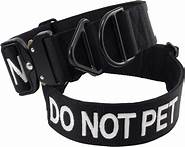How to Keep a Grasshopper as a Pet
Grasshoppers are fascinating and easy-to-care-for insects that can make great pets for both children and adults. If you're thinking about getting a grasshopper as a pet, here's everything you need to know about how to keep one healthy and happy.

Choosing the Right Grasshopper
There are many different species of grasshoppers, so it's important to choose one that is suitable for keeping as a pet. Some of the most popular species include the Lubber grasshopper, the American grasshopper, and the Carolina grasshopper. These species are relatively docile and easy to care for.
When choosing a grasshopper, look for one that is active and alert. The grasshopper should also be free of any visible injuries or parasites.
Housing Your Grasshopper
Grasshoppers need a spacious enclosure that is at least 10 gallons in size. The enclosure should be made of a material that is escape-proof, such as glass or plastic. The enclosure should also have a lid that is securely fastened to prevent the grasshopper from escaping.
Inside the enclosure, you will need to provide your grasshopper with a variety of items, including:
- A substrate, such as sand or soil, for the grasshopper to burrow in
- A hiding place, such as a rock or a piece of bark
- A water dish
- A food dish
- A few branches or leaves for the grasshopper to climb on
Feeding Your Grasshopper
Grasshoppers are herbivores and their diet consists mainly of leaves, flowers, and grasses. You can feed your grasshopper a variety of fresh greens, such as lettuce, cabbage, and spinach. You can also offer your grasshopper occasional treats, such as fruits and vegetables. Make sure to remove any uneaten food from the enclosure every day.
Caring for Your Grasshopper
Grasshoppers are relatively low-maintenance pets. However, you will need to provide them with some basic care in order to keep them healthy and happy.
- Mist the enclosure daily. Grasshoppers need a humid environment to thrive. You can mist the enclosure with water once or twice a day to keep the humidity levels high.
- Change the substrate regularly. The substrate in the enclosure should be changed every few weeks to prevent the buildup of waste and bacteria.
- Handle your grasshopper gently. Grasshoppers are delicate creatures and can be easily injured if handled roughly. When handling your grasshopper, always support its body with your hands.
Conclusion
Grasshoppers can make great pets for both children and adults. They are relatively easy to care for and can provide hours of entertainment. If you're thinking about getting a grasshopper as a pet, make sure to do your research and choose the right species for your needs.
Declaration: All article resources on this website, unless otherwise specified or labeled, are collected from online resources. If the content on this website infringes on the legitimate rights and interests of the original author, you can contact this website to delete it.




